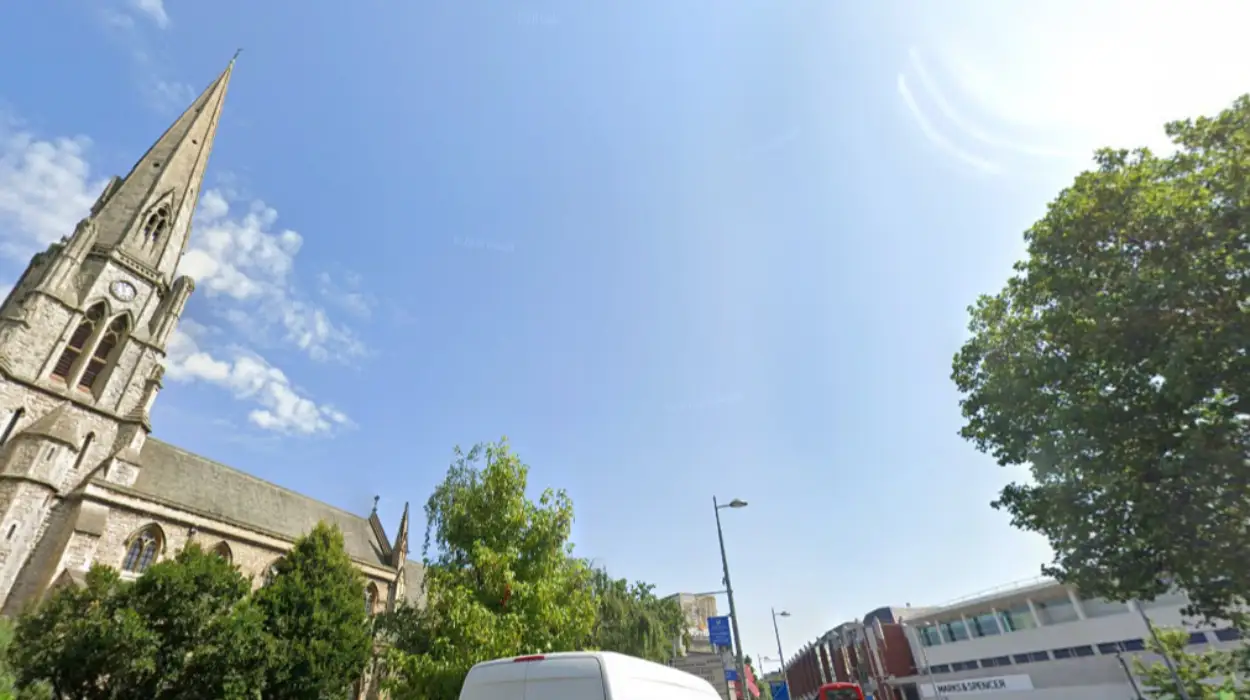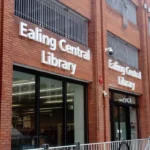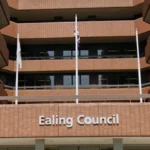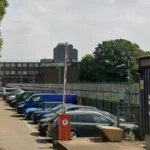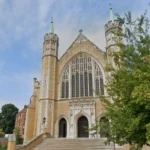Ealing, often referred to as the “Queen of the Suburbs,” is one of West London’s most vibrant and diverse boroughs. Known for its leafy streets, well-kept parks, and strong sense of community, it has long been regarded as a desirable place to live, work, and visit.
However, when considering moving to or spending significant time in any location, safety is an important factor.
The question of “How safe is Ealing?” is a multi-layered one, involving crime statistics, local community initiatives, public transport safety, and the overall atmosphere of the area.
Understanding Safety in Ealing: The Big Picture
Ealing enjoys a reputation for being safer than many inner-London areas. It combines the benefits of a suburban environment with easy access to the city centre, which makes it attractive to families, young professionals, and retirees alike.
While no borough is entirely free of crime, Ealing’s crime rates are generally moderate when compared to other London boroughs, particularly those in more densely populated or economically challenged areas.
The area’s wide streets, well-lit public spaces, and active local community groups contribute to a feeling of security for many residents. At the same time, it is important to recognise that Ealing is not immune to the issues faced by any large urban area, such as petty theft, anti-social behaviour, and occasional more serious crimes.
The borough’s diversity in neighbourhoods, ranging from bustling Ealing Broadway to quieter pockets like Northfields or Pitshanger, also means that the perception and reality of safety can vary within different parts of Ealing.
Daytime Safety in Ealing
During the day, Ealing generally feels safe and welcoming. Its main shopping districts, such as Ealing Broadway, Northfield Avenue, and South Ealing Road, are busy with shoppers, families, and commuters.
Parks like Walpole Park, Lammas Park, and Ealing Common are popular for walks, picnics, and children’s play areas. The presence of foot traffic, local businesses, and community events during daylight hours tends to create a secure atmosphere.
Schools and nurseries are spread throughout the borough, and the school run often means there are many parents and children in the streets, which helps keep the area lively and monitored.
Many residents report feeling comfortable walking alone during the day, even in less busy areas, thanks to the borough’s suburban layout and relative lack of high-crime “hotspots” when compared to certain other parts of London.
Night-time Safety in Ealing
Safety perceptions often change after dark, and Ealing is no exception. While many parts of the borough remain quiet and peaceful at night, areas with nightlife, particularly around Ealing Broadway, can see an increase in anti-social behaviour during late hours, especially on weekends.
Incidents of rowdiness, public intoxication, or minor vandalism occasionally occur in these zones.
However, the presence of CCTV, regular police patrols, and well-lit main roads significantly mitigate risks. Residential areas, even those close to town centres, tend to be calm at night, and crimes such as burglary or violent offences are not overly prevalent compared to national averages.
That said, as with any urban area, residents and visitors are encouraged to take sensible precautions, such as avoiding poorly lit shortcuts and staying aware of their surroundings.
Crime Rates and Trends
Official crime data shows that Ealing’s crime rate is typically lower than that of inner-London boroughs like Camden, Lambeth, or Hackney. The most common types of crime in Ealing include theft from motor vehicles, bicycle theft, and minor public order offences.
More serious crimes such as armed robbery or violent assaults are relatively rare, and when they do occur, they are often isolated incidents rather than part of a larger pattern.
Over the past decade, the borough has seen periods of both increases and decreases in reported crime. Community policing initiatives and investment in CCTV and public safety infrastructure have contributed to keeping crime levels manageable.
Ealing Council and the Metropolitan Police work closely with residents to identify problem areas and address issues before they escalate.
Safer Neighbourhood Teams and Community Initiatives
A key reason Ealing maintains a relatively safe environment is the active role of local Safer Neighbourhood Teams (SNTs). These are dedicated police units assigned to specific wards within the borough.
They focus on building relationships with residents, listening to concerns, and taking proactive measures to address local safety issues.
Community watch groups, neighbourhood associations, and residents’ forums also contribute to the area’s safety. Many streets have WhatsApp groups or community boards where neighbours can report suspicious activity or share important updates.
This sense of community involvement plays a huge role in creating a secure environment, as people look out for each other’s homes, cars, and general well-being.
Public Transport Safety
Ealing benefits from strong transport links, including several London Underground stations (Central, District, and Piccadilly lines), National Rail services, and numerous bus routes. Public transport safety is generally good, with Transport for London (TfL) staff, CCTV coverage, and regular police presence at major stations like Ealing Broadway and West Ealing.
During peak commuting hours, public transport is busy and secure. Late at night, services can be quieter, but stations remain monitored, and many are well-lit. The borough also benefits from Night Tube services on certain lines, offering safer late-night travel options compared to areas that rely solely on night buses.
Residential Safety in Ealing
The borough’s housing ranges from Victorian terraces to modern apartment blocks and suburban family homes. Many residential streets are quiet, well-maintained, and benefit from active community engagement.
While opportunistic crimes like package theft or car break-ins occasionally occur, they are less frequent than in areas with higher levels of transient populations.
Some gated communities and apartment complexes in Ealing offer additional security features such as entry codes, on-site concierges, and security patrols, which further enhance residents’ sense of safety.
Safety for Families and Children
Ealing’s reputation as a family-friendly borough is strongly tied to its safety profile. The abundance of schools, playgrounds, and youth clubs creates a supportive environment for children.
Parents often report feeling comfortable letting older children walk to nearby parks or schools during daylight hours, although supervision is still advised, especially in busier commercial areas.
Events such as the Ealing Summer Festivals bring together families and neighbours, fostering a sense of shared responsibility for the community’s well-being.
Parks and sports facilities are regularly maintained, which reduces hazards and encourages outdoor activity.
Safety for Students and Young Professionals
The borough’s proximity to universities and colleges, as well as its convenient transport links, makes it a popular choice for students and young professionals.
Rental accommodation is spread throughout the area, and many report feeling safe walking home from the station, especially in better-lit neighbourhoods.
Areas with more nightlife do occasionally see isolated incidents, but most social venues in Ealing take security seriously, with bouncers, ID checks, and CCTV in place.
Emergency Services and Healthcare Access
In terms of emergency response, Ealing is well served by the Metropolitan Police, London Fire Brigade, and London Ambulance Service.
Response times are generally good, and the borough is also home to Ealing Hospital, which provides urgent and emergency care.
Access to these services, along with numerous local GP surgeries and pharmacies, adds to the sense of safety and security for residents.
Safety Tips for Residents and Visitors
While Ealing is a relatively safe borough, there are universal precautions that can enhance personal safety:
- Keep valuables out of sight when in public.
- Lock bicycles securely, ideally with two locks.
- Be cautious when using ATMs late at night.
- Avoid walking alone in poorly lit areas after dark.
- Join local community groups to stay informed about neighbourhood safety updates.
These simple measures, combined with Ealing’s existing safety infrastructure, can significantly reduce the risk of becoming a victim of crime.
The Role of Ealing Council in Safety
Ealing Council invests in public lighting, CCTV installation, and regeneration projects that indirectly improve safety by making public spaces more welcoming.
The council also works closely with schools and youth organisations to provide constructive activities for young people, reducing the likelihood of anti-social behaviour.
Furthermore, Ealing’s planning and development policies often take safety into account by designing open, visible public spaces that discourage crime.
The General Feeling of Safety
Perhaps one of the most telling indicators of Ealing’s safety is how residents themselves feel. Surveys and anecdotal evidence suggest that most locals feel safe in their neighbourhoods both during the day and at night, especially when taking sensible precautions.
The borough’s mix of suburban charm, active community engagement, and accessible emergency services makes it a place where safety is a priority.
Conclusion
So, how safe is Ealing? While it faces the same challenges as any urban area, it stands out as one of the safer and more welcoming boroughs in Greater London.
A combination of community involvement, effective policing, and well-maintained public spaces contributes to an environment where residents and visitors alike can feel secure.
With its balance of suburban calm and urban convenience, Ealing offers not only a high quality of life but also a reassuring sense of safety.
FAQs
Is Ealing safe for tourists?
Yes. Tourists generally find Ealing safe, especially in well-populated areas and during the day. As always, basic precautions are advised.
Which parts of Ealing are considered the safest?
Areas such as Pitshanger, Northfields, and parts of Hanwell are often cited by residents as particularly safe.
Is Ealing safe at night?
Most areas are safe at night, but busy nightlife zones near Ealing Broadway can see minor anti-social behaviour on weekends.
Are there police stations in Ealing?
Yes. Ealing has local police stations and Safer Neighbourhood Teams that serve each ward.
How does Ealing compare to other London boroughs in terms of safety?
Ealing’s crime rate is generally lower than many inner-London boroughs, making it an attractive choice for those seeking a safe yet well-connected location.


